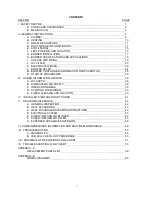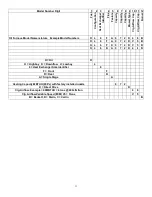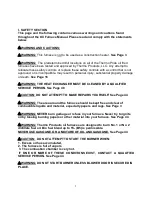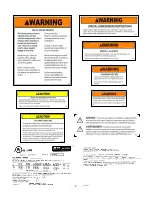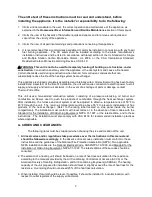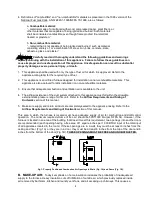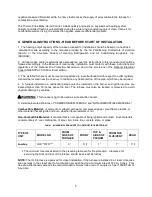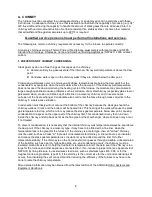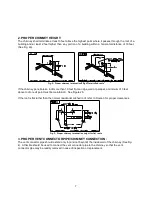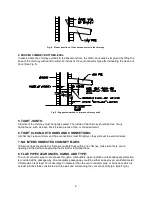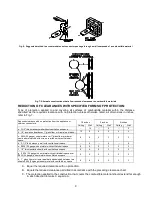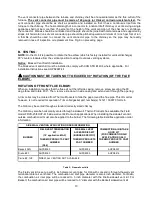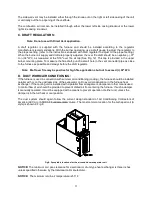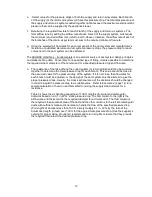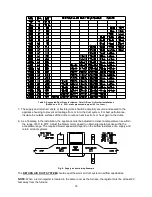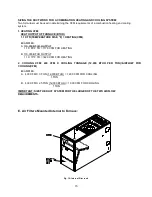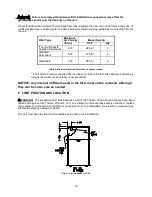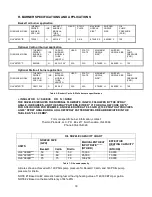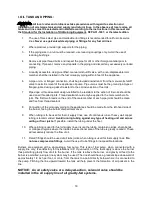
4
4. Definitions of "combustible" and "non-combustible" materials as presented in the 1996 version of the
National Fuel Gas Code, ANSI Z223.1-1996/NFPA 70-1996, are as follows:
a.
Combustible material:
“...materials made of or surfaced with wood, compressed paper, plant fibers, or
other materials that are capable of being ignited and burned. Such materials
shall be considered combustible even though flame proofed, fire-retardant
treated, or plastered.”
b.
Non-combustible material:
“...material that is not capable of being ignited and burned; such as material
consisting entirely of, or a combination of, steel, iron, brick, concrete, slate,
asbestos, glass, and plaster.”
:
Carefully read and thoroughly understand the following guidelines and warnings
before continuing with the installation of this appliance. Failure to follow these guidelines can
cause improper and unsafe operation of this appliance. Unsafe operation can result in substantial
property damage, severe personal injury, or death.
1. This appliance shall be used with only the type of fuel oil for which it is approved. Refer to the
appliance-rating label for the required type of fuel.
2. This appliance is an oil-fired furnace designed for installation on non-combustible materials. This
appliance is also approved for attic installation on non-combustible materials.
3. Ensure that adequate combustion and ventilation air is available to the unit.
4. The airflow resistance of the duct system attached to this appliance must fall within the allowable
external static pressure range for this unit. Refer to the
Airflow Requirements and Sizing of
Ductwork
section of this manual.
5. Make sure supply and return air ducts are completely sealed to the appliance casing. Refer to the
Airflow Requirements and Sizing of Ductwork
section of this manual.
This area in which the furnace is located must have adequate supply of air for combustion and draft control
operation. The minimum required volume of free air should be 50ft³/1000 btu (per NFPA 54). However, if the
furnace is located in an area of the building that doesn’t meet this requirement, two openings into another room
are recommended (each opening having a free area of 1 square inches per 1,000 BTUH input of the total input
of all appliances located in the room). If these openings are in a wall, they must be at least 6 inches from the
ceiling and floor (Fig. 1A) or they are in a door, they must be at least 6 inches from the top of the door and 6
inches from the bottom of the door (Fig. 1B).
THESE OPENINGS MUST BE FREE AND UNOBSTRUCTED.
Fig 1: Properly Positioned Combustion Air Openings In Walls (Fig. 1A) and Doors (Fig. 1B).
B. MAKE-UP AIR:
Today's emphasis on home insulation increases the probability of inadequate air
supply to the furnace. Heavy insulation cuts off infiltration of outside air, which previously replaced inside
air removed by bathroom, kitchen and laundry vent fans, and air escaping up chimneys. This causes a
Summary of Contents for OL6FA072D48
Page 2: ......
Page 4: ......
Page 7: ...2...
Page 56: ...51 VIII Sequence of Operations Flow Chart...
Page 57: ...52...
Page 58: ...53 IX Trouble Shooting Flow Chart...
Page 59: ...54...
Page 60: ...55...
Page 61: ...56...
Page 62: ...57...



